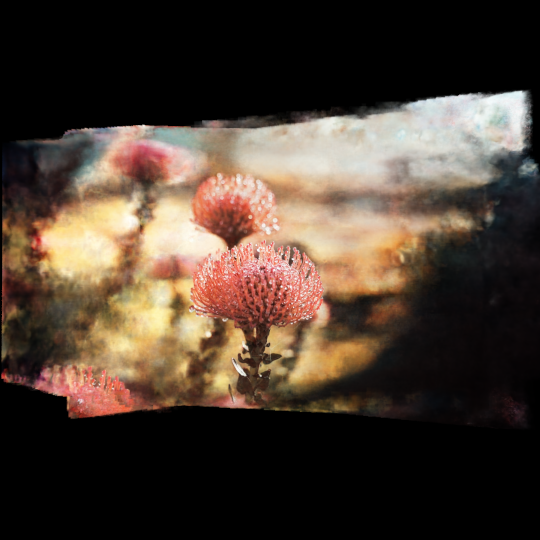NVIDIA instant Nerf on google colab, train a nerf without a massive gpu - 3a1b2c3/seeingSpace GitHub Wiki
Because my gtx graphics card is a bit too old to train instant Nerf locally I am working on a google colab setup for NVIDIA Instant Nerf, so you can try before buying a new one... Google Colab is free although you can get Pro subscription.
NVIDIA Instant Nerf for the rest of us
https://github.com/NVlabs/instant-ngp is probably the first commercial Nerf application out there. Let's get started.
Note: NVIDIA instant Nerf uses a commercial license, please check it here
Need advice picking the right Nerf framework: Getting started-and Nerf frameworks
TLDR: the theory
Instant nerf reduces the computational cost with a versatile new input encoding that permits the use of a smaller network without sacrificing quality, thus significantly reducing the number of floating point and memory access operations: a small neural network is augmented by a multiresolution hash table of trainable feature vectors whose values are optimized through stochastic gradient descent. Video
Read the paper: here.
The long version and more theory about neural rendering is here
Train your Nerf (for free) on Google's Colab
Instant Nerf needs an NVIDIA graphics card with 8 GB memory but it is also possible to run on Goolge's free colab offering. My smaller gtx 1090 card is theoretically supported but i had CUDA memory errors all the time. So i found this discussion.
https://colab.research.google.com/drive/10TgQ4gyVejlHiinrmm5XOvQQmgVziK3i?usp=sharing
We can do all the steps but the network training and rendering on our local machine.
- **Download the juniper notebook The included Fox example trained in a bit over half an hour to train on Colab for me, so you will loose some "instant": Training: 100% 99995/100000 [37:44<00:00, 44.16step/s, loss=0.000291]

Step by step
Overview
- Find camera positions in your images with Colmap, i did that on my local computer but nothing wrong with running that python script on the cloud. Most existing data already has a transforms.json files with that data
- Train the network (via a notebook) from images, optional save a snapshot .mgspack file (in Colab on the cloud)
- Export a mesh or render from a new camera (in Colab on the cloud) using the snapshot file is fast
Prepare and upload your source data (on Goolge drive)
-
Sign up or log into google drive.
-
Upload the notebook file from https://github.com/3a1b2c3/seeingSpace/blob/main/instantNerf/instant_ngp.ipynb to your drive
-
There is some example data included with the code or you can download standard nerf data
-
If you use your own data follow the instants nerfs instructions for colmap to create the camera transforms as a transforms.json file. You may want to adjust aabb_scale (the bounding box) in the transforms.json file to save memory, details The COLMAP frame is [right, down, forwards] or [x, -y, -z].
-
If you use your own data upload your images and transforms.json file to a folder in google drive Some tips on shooting for nerf
-
If you run out of memory you can use fewer images, scale them down
-
or limit the number of threads in the script by adding a flag --SiftExtraction.num_threads arg=1 to this lien (https://www.linkedin.com/in/katrinschmid/) 9:01 PM https://github.com/NVlabs/instant-ngp/blob/57a6f0946428f1385833a927d4be5e2017849762/scripts/colmap2nerf.py#L88
I am using this CC licensed footage.
Here is the result:

You can download the data here if you do not want to build it and run Colmap yourself. I also uploaded the zipped .obj mesh result.
Run the training in Google Colab
- You can open a notebook in google drive and you are able to run it in in Colab
- Make sure your Colab runtime has a gpu by choosing the connect option (under Runtime menu):
- Run all cells in the notebook
- The code connects to your google drive and will prompt for your login, for alternatives see link below in Colab resources. This will mount the drive to a file path so can access it like any other folder
Google Colab File tab
-
Your notebook will first install and build instant Nerf from NVIDIA's github, that can take a few minutes
-
We are using the python wrapper script run.py since it gives you more options than the testbed.exe to run without gui.
You can run a cell with just the help !python ./scripts/run.py -h command to see all script options
- I am initially using something like !python ./scripts/run.py --mode nerf --scene /content/drive/MyDrive/ColabNERF/table/images --save_snapshot /content/drive/MyDrive/ColabNERF/table/snap/mySnap.mgspack
Training Progress displayed in the notebook
Save snapshots, images and models
Training/Snapshots (.msgpack)
-
A binary snapshot file lets you re-run a Nerf without re-training or continue training, mine turned out some 90 MB I just keep the snap shot on google drive.
-
You can also download the snapshot and use it with gui on yor local machine if you have a local build of instant nerf
-
from google drive png width and screenshot_dir parameter have to be specified for this to work
The syntax to train, save and render a model is somewhat like
# some variables
scene="/content/sample_data" # the folder containing transform.json
screenshot_dir="/content/sample_data/renders"
snap="/content/sample_data/snap/chair_abb8.msgpack"
width=1080
height=1080
!python ./scripts/run.py --mode nerf --scene {scene} --width {width} --height {height} --screenshot_dir {screenshot_dir} --save_snapshot {snap1}
# --load_snapshot {snap1}

Exporting Meshes (obj/ply)
Meshes are generated using marching cubes. To export one add this flag to your run.py:
--save_mesh /content/drive/MyDrive/ColabNERF/table/render/m.obj
- obj model raymarching
Rendering (--screenshot_transforms)
To animate a camera you need a json file with per frame camera settings similar to transforms.json from colmap, i included my as camera.json. Somebody made a tool that makes this easier here https://nerf-pathtools.netlify.app/

Download files or drive
Missing script but nice in gui
- Camera editor
- Crop aabb, there is a bug https://github.com/NVlabs/instant-ngp/issues/683 testbed.render_aabb = ngp.BoundingBox([0.25, -1.5, -1.5], [1.5, 2.5, 2.5]) to presumably set the initial rendering confines, and testbed.compute_and_save_marching_cubes_mesh(args.save_mesh, [res, res, res], ngp.BoundingBox([0.25, -1.5, -1.5], [1.5, 2.5, 2.5])
Inspiration
- Sunk ship reconstruction https://vimeo.com/716255237
Please feel free to contribute or call out any errors